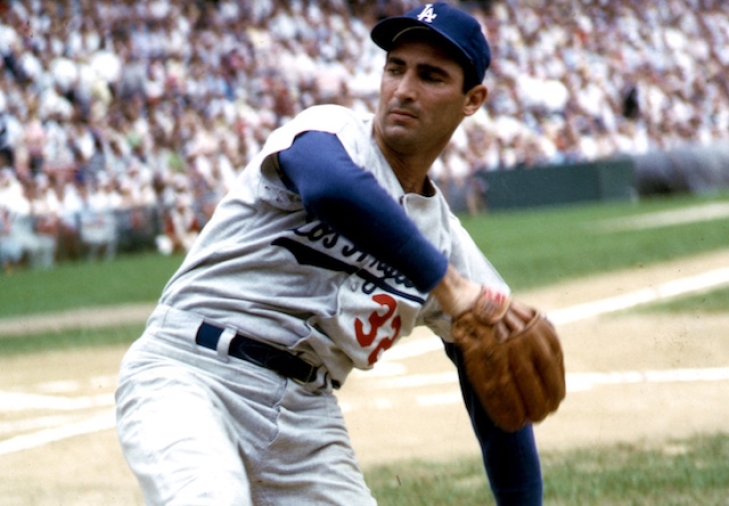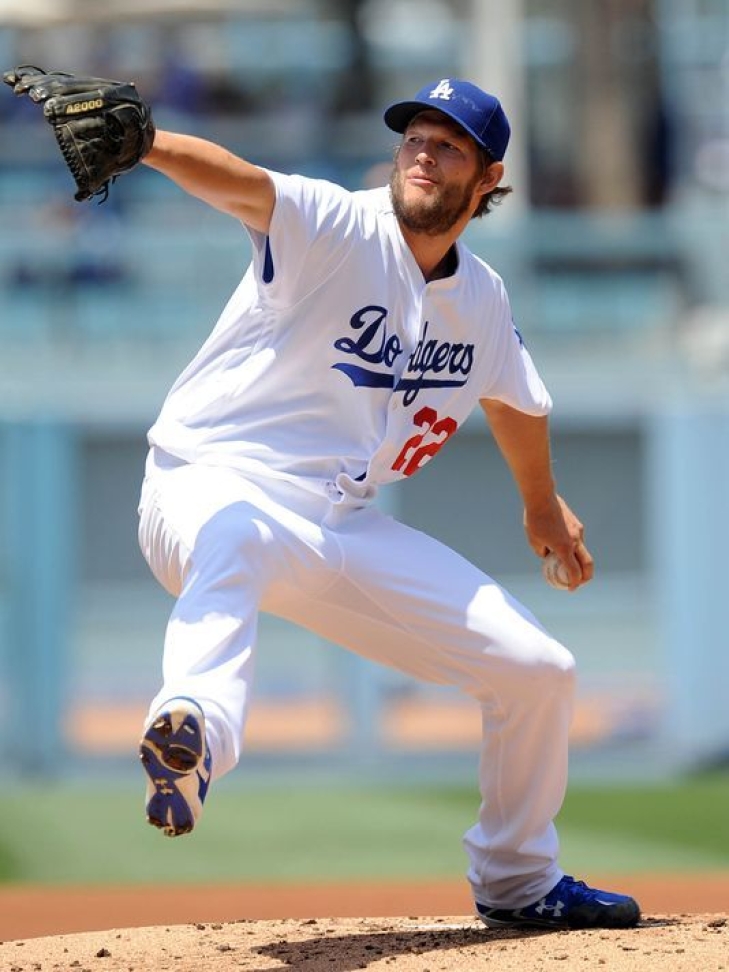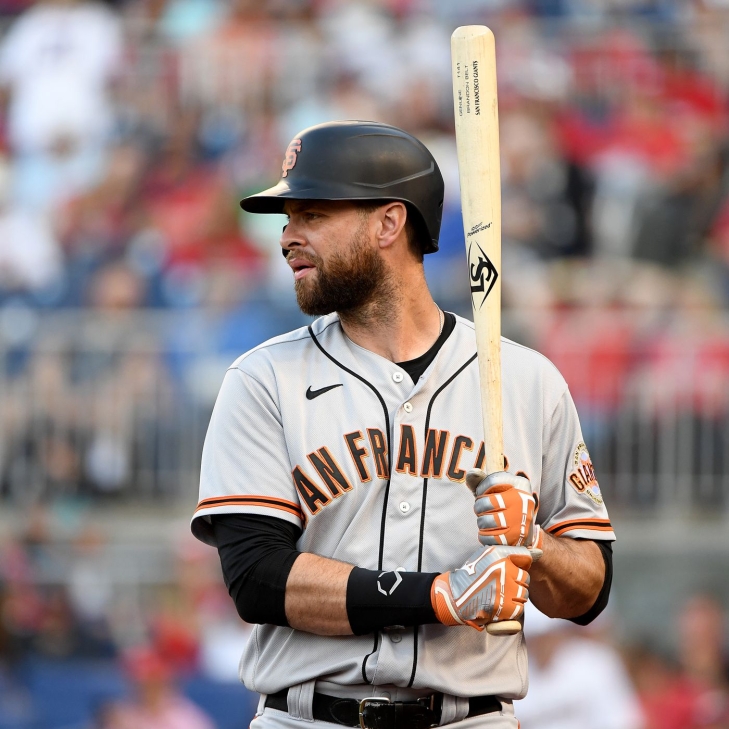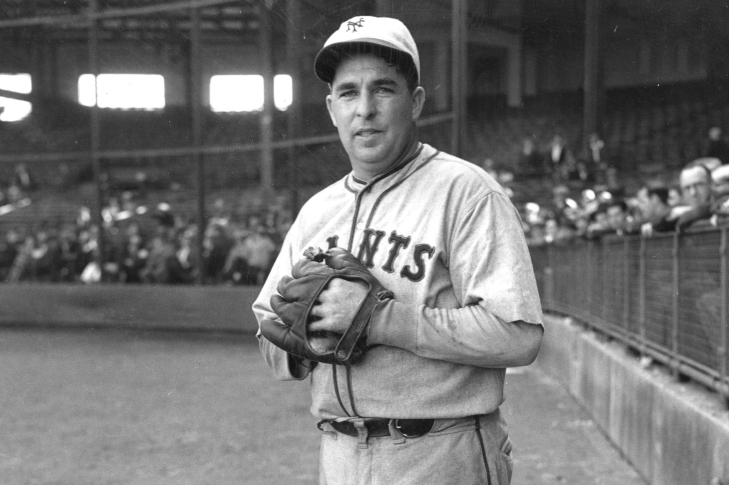
Committee Chairman
3. Sandy Koufax
One of the many players we could have easily inserted as the greatest Dodger of all time is Sandy Koufax, and had we done this list two years before its first publication (2022), he likely would have been.
Koufax was a walk-on at the University of Cincinnati, and while he showed poor control, he had the velocity. The southpaw was scouted by the Dodgers and was signed by them in late 1954, and his sheer talent propelled him to the Majors the following summer, but the first half of his career was not what got him into the Hall of Fame.
It was widely believed that Koufax was the hardest thrower in the game, but the accuracy wasn't coming, and when he got in trouble, the more erratic he became. From his debut to 1960, he had a losing record of 36-40 with an ERA of 4.10 and a WHIP of 1.428. Koufax and the Dodgers knew the talent was there, but he grew frustrated and considered quitting. He opted to give it one more year, with Koufax giving his all, dedicating himself to improved fitness. More importantly, one of the Dodgers' scouts noticed that he reared back so far that he lost sight of the plate. These corrections made Koufax the most feared Pitcher of the next six years.
1961 would be his breakout year, with Koufax going 18-13 with a league-leading 269 Strikeouts and topping the NL in FIP (2.00) and SO/BB (2.80). Koufax was an All-Star this year, beginning a six-year streak, the first of many. Koufax won his first ERA Title in 1962 (2.53) and WHIP Title (1.036), starting a five-year run and a four-year, respectively, as the league leader. The first two seasons of the 1960s were terrific, but it was about to get even better.
It can be debated that the next four years were the best ever by a Pitcher. Not only did he keep his ERA under 2.05 in all those years, but his WHIP also stayed under one. Koufax led the NL in three years (1963, 1965 & 1966), and he won the Cy Young in all of those seasons, with a third-place finish in 1964. He also won the MVP in 1963 and was the runner-up for the award in 1965 and 1966.
Koufax, who had already won a World Series Ring in 1959, led Los Angeles in 1963 and 1965, going a combined 4-1 and allowing four Earned Runs over 42 Innings with 52 Strikeouts. He won the World Series MVP in both of those playoffs, and while the teams were loaded with talent, it is difficult to envision the Dodgers winning ’63 and ’65 without Koufax.
As great as Koufax was from 1963 to 1966, traumatic arthritis forced him to retire. Koufax was inducted into the Baseball Hall of Fame in his first year of eligibility, and at the age of 37, he was (and still is) the youngest man to enter the Hall. Los Angeles retired his number 32 in 1972, which should have happened much sooner.
1. Clayton Kershaw
When making these lists, they are supposed to be fun and to use the proverbial number 99.9, which is the percentage they are. With the Los Angeles Dodgers, it was so hard, and there were so many people we could choose from within the top tier that choosing amongst icons was befuddling. Especially considering the man we decided at the top is a current player.
As great as Clayton Kershaw has been, deciding on the Pitcher was very difficult. It was not all about advanced metrics, as Kershaw has the overflowing trophy case, the World Series Ring, and an eventual plaque in Cooperstown. The Dodgers have won many titles and housed many eventual Hall of Famers and iconic players in both their existence in Brooklyn and Los Angeles, but in the end, with Kershaw, whose 71.9 bWAR with the Dodgers is a franchise high.
Kershaw was a First Round pick in 2006, and the lefthander would soon draw comparisons to another famous Dodger and southpaw legend, Sandy Koufax. He debuted two years later and methodically improved over his first few seasons, and the pundits were predicting that he was poised for a breakout. In 2011, they would be right.
Major League Baseball does not do a Pitcher of the Decade, but for the 2010s, it would be Kershaw or Max Scherzer. Scherzer ascended to the opening-day starter in 2011, and he was the top dog in Los Angeles and all of the National League. He won the Cy Young with a league-leading 21 Wins, 2.28 ERA, and 0.977 WHIP. As great as Kershaw was in 2011, he was still under 25, and his best was still ahead of him.
Kershaw did not win the Cy Young in 2012, finishing second to New York’s R.A. Dickey, but did win his second ERA (2.53) and WHIP Title (1.023). The lefthander was even better the next two seasons, capturing the Cy Young in both 2013 and 2014 and again winning the ERA and WHIP titles, with both metrics under two and one, respectively. Kershaw was so good in 2014 that he won the MVP, and in addition to his ERA (1.77) and WHIP (0.857), he also topped the NL in SO/BB (7.71) and FIP (1.81).
The Cy Youngs may have ended for Kershaw, but he was still a contender for the award in the mid-2010s. Kershaw won his fifth ERA Title in 2017 (2.31) and finished in the top five in Cy Young from 2015 to 2017, including a second-place finish in 2017. An annual All-Star from 2011 to 2017, Kershaw was so again in 2019, and he had another top ten Cy Young finish and again in 2020. That might have been the most special season for Kershaw.
Kershaw led Los Angeles to the playoff nine times, including two World Series appearances, but they had not won it all until 2020. The Dodgers won the World Series because Kershaw won two games against Tampa, and he finally had his ring. Kershaw kept going, going to two more All-Stars (2022 & 2023), but fell off in 2024, though his team won another World Series (though Kershaw did not play)
As of this writing, Kershaw's career in Los Angeles (and perhaps the sport) could be over, but he is the all-time leader in bWAR (79.4), Strikeouts (2,968), and is second in Wins (212).
Regardless of what happens to Kershaw in the next few years, his legacy as a Dodgers is intact, and we proudly (as tough as it was) anoint him as the greatest Dodger of all time.
47. Brandon Belt
Brandon Belt played the first twelve years if his Major League career with the San Francisco Giants, where he predominantly played at First Base.
An All-Star in 2016 (his best year, with 17 HR, 82 RBI, and .868 OPS), Belt was never considered an elite performer but played a role in the Giants World Series wins in 2012 and 2014. Belt might not be considered a power hitter, but this is a respectable metric for him, as he had seven years with at least 15 Home Runs, including a surprising 29 HR year in 2021, where he only played 97 Games. He signed with the Toronto Blue Jays in 2023, leaving behind 1,146 Hits and 175 Home Runs.
Belt will never go down as one of the best players in a Giants uniform, but only a handful have played with the team as long and have multiple rings to show for it.
46. Freddie Fitzsimmons
Freddie Fitzsimmons played the first dozen years of his career with the New York Giants after being acquired from Indianapolis of the American Association in the summer of 1925, and the year after, he was a fixture in the Giants rotation until he was traded to crosstown Brooklyn during the 1937 Season.
The righthander would not have a losing record in New York until 1935, which included a 20-Win year in 1928, 19 Wins in 1930, and 18 in both 1931 and 1934. Fitzsimmons cranked out well over 200 Innings nine years in a row (1926-34), and though he did not dazzle with Strikeouts, he found a way to get outs and was in the top ten in WHIP four times as a Giant.
Fitzsimmons would help the Giants win the 1934 and 1936 Pennant, and though he lost all three decisions, he was one of the reasons they got there, and New York would prevail in 1933. His overall record with New York of 170 and 114, a winning percentage of .599.





